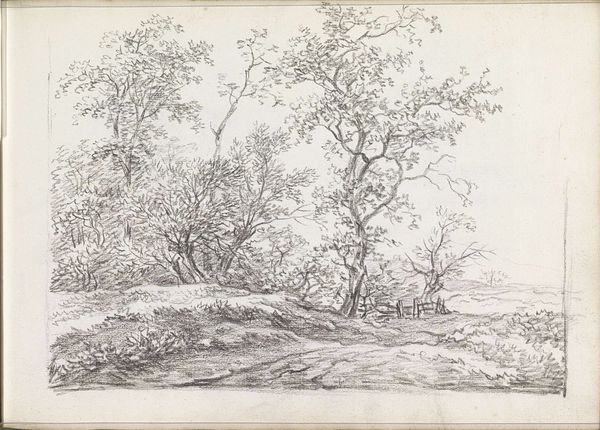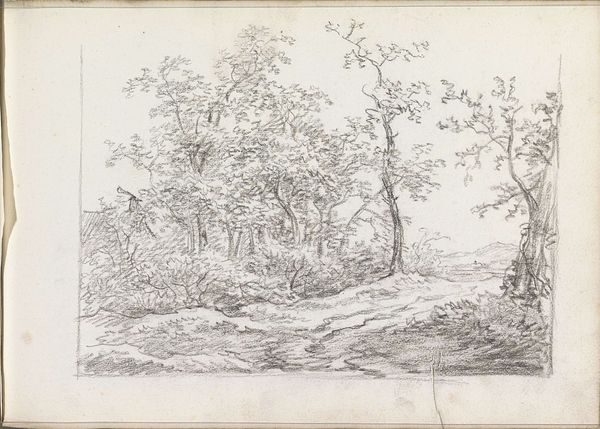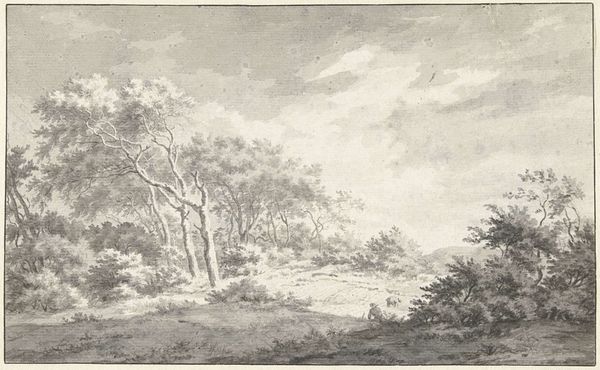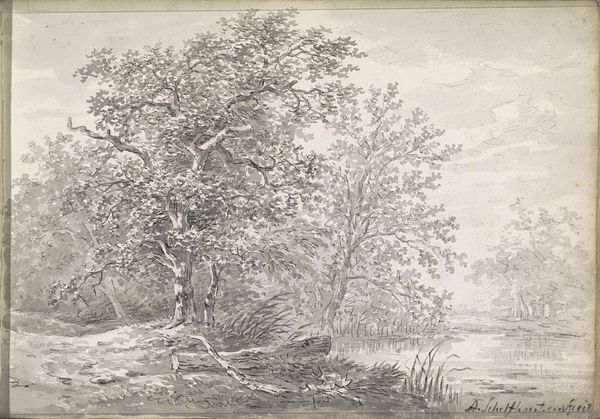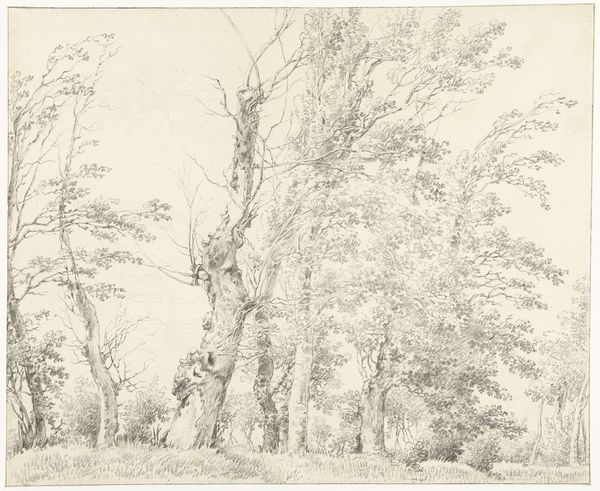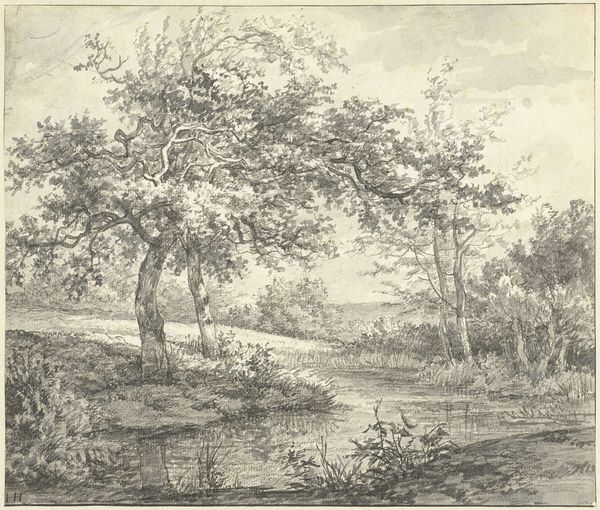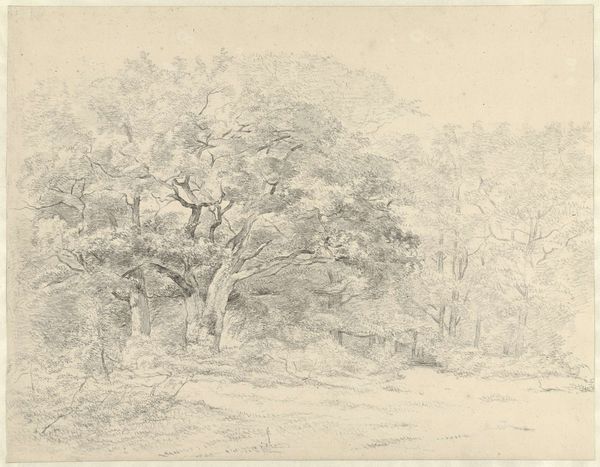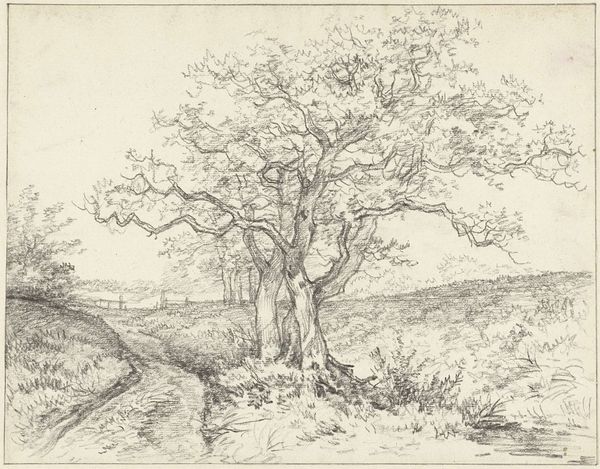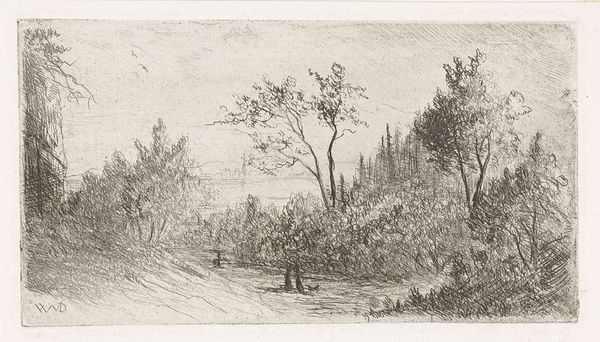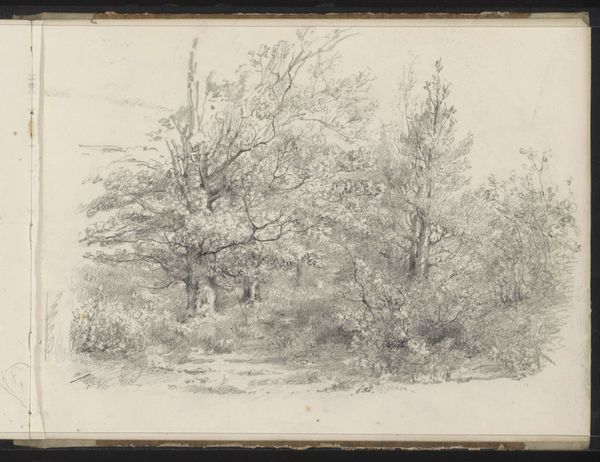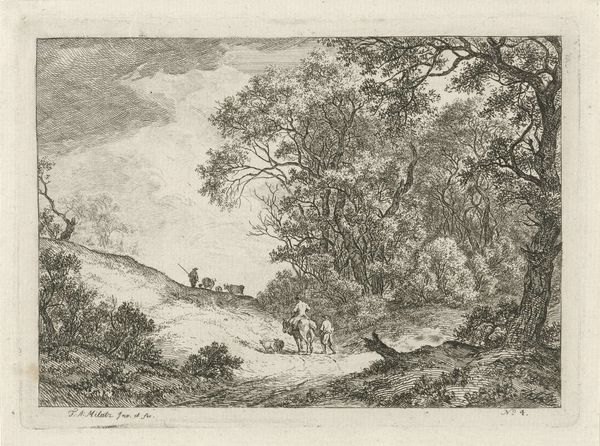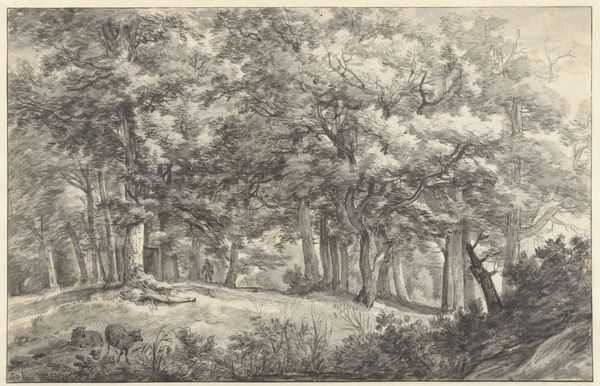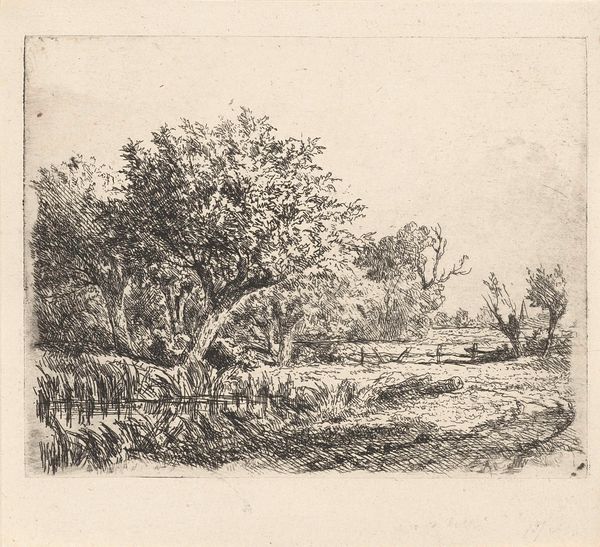
drawing, pencil
#
drawing
#
pencil sketch
#
landscape
#
forest
#
romanticism
#
pencil
#
northern-renaissance
#
realism
Dimensions: height 199 mm, width 272 mm
Copyright: Rijks Museum: Open Domain
Curator: This drawing, dating from 1816, is entitled "Trees on a Dune Edge near the Hartekamp, Heemstede," by Pieter van Cranenburgh. Editor: My first impression is one of quiet observation; the density of the foliage creates a beautiful interplay of light and shadow. The restrained pencil work almost gives it a hazy, dreamlike feel. Curator: Indeed, the texture created by the pencil is quite compelling. Notice how the artist uses varying pressure to build up depth and form. Look closely at the paper itself. Its material qualities—the way it may have been manufactured locally—undoubtedly influenced the final effect. What type of pencils were accessible to him, and the labor conditions of the people producing paper at this time, must have influenced the style! Editor: Yes, and within that formal rendering, I see elements of Romanticism and realism in tension, almost as competing representational modes. The almost obsessive detailing in the leaves edges on hyperrealism, yet the subdued tonality leans into that Romantic sensibility. It's a carefully balanced composition, would you agree? Curator: I do, although I want to reiterate: it’s important to consider what Cranenburgh may have understood as “realistic,” shaped by his time. And even, who his suppliers were! Were his pencils and paper bought or bartered for? Such exchange practices impact the kind of aesthetic labor achieved by a piece such as this. Editor: Setting those possibilities aside for a moment, consider the placement of the trees along the dune. The artist directs the viewer's eye, using form to emphasize a sense of place, guiding you along that subtle path into the copse. How would this drawing have been understood in the context of its era, given those deliberate, formal choices? Curator: Given its subject, it could have served practical functions. Artists, especially landscape artists of that time, were often commissioned to make a landscape appealing to an expanding class of gentry. How could land be converted? Which forests had valuable resources to be extracted? Art rarely escapes that function. Editor: I suppose the work does prompt questions about man’s interaction with nature. I appreciate how its seeming simplicity unfolds with contemplation. Curator: Yes, and in studying its context and labor, perhaps it encourages new views on landscape traditions themselves.
Comments
No comments
Be the first to comment and join the conversation on the ultimate creative platform.
